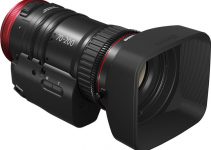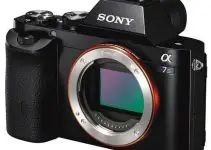Just two days ago, Canon unveiled not one, but two 4K cameras ahead of NAB 2015 in Vegas, which starts this weekend. One of them was of course, the one we’ve all been waiting for – the Canon C300 Mark II, while the other was a bit of an oddball to say the least. The Canon XC10 4K hybrid camera features a 1″ sensor with a 10x fixed zoom lens that is 24mm at the widest end (with variable aperture f/2.8-5.6 nonetheless and 27mm-270mm crop in 4K recording mode), and 4K internal recording in .MXF format in the new Canon XF-AVC codec (but in an 8-bit 422 colour sampling) at a massive 305Mb/s bit rate. It has 2 choices for media – Cfast 2.0 and SDHC Class 10 or above. Cfast 2.0 media is required for 4K UHD recording and will make a substantial dent in your pocket at $350+ a pop for a 64GB card for only 25 minutes of 4K recording time, while an SDXC/SDHC card can be used for 4K photo capture from a 4K video stream and for Full HD video capture an entry-level prosumer camera.
Although 4K is actually limited to Ultra HD 3840 x 2160 and up to 30p only (23.98/25/29.97), super-slow motion of up to 120fps is available in 720p, which is a compromise to say the least, but nonetheless available. 1080p goes up to 60p, which is much better.
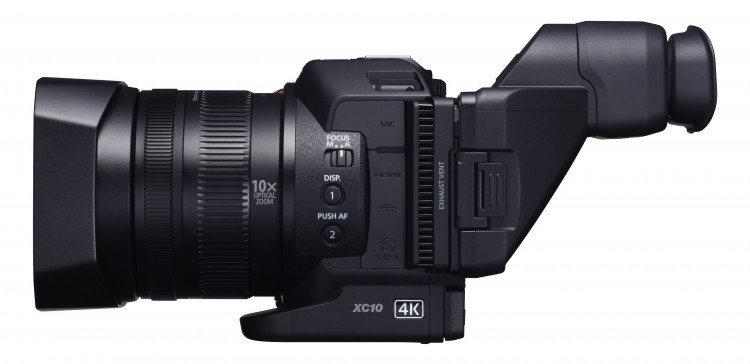 Atomos have come out and announced they full fully support this new Canon camera, which is good news for those of you out there planning on utilising the 4K capabilities of the camera. The Atomos Shogun 4K recorder/monitor will be able to record ProRes UHD or DNxHR 4K (UHD) from the HDMI output of the XC10 up to 30p. Full HD recording up to 60p in ProRes / DNxHD as well as Start/Stop trigger and timecode via HDMI will be supported as well.
Atomos have come out and announced they full fully support this new Canon camera, which is good news for those of you out there planning on utilising the 4K capabilities of the camera. The Atomos Shogun 4K recorder/monitor will be able to record ProRes UHD or DNxHR 4K (UHD) from the HDMI output of the XC10 up to 30p. Full HD recording up to 60p in ProRes / DNxHD as well as Start/Stop trigger and timecode via HDMI will be supported as well.
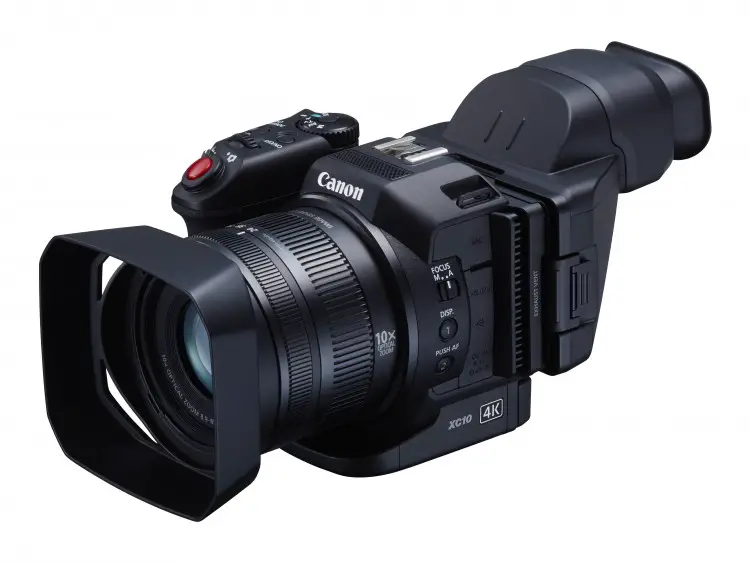
Here’s what the Atomos Shogun is able to do with the Canon XC10:
- Direct to ProRes/DNxHR 4K recording (up to 2160p30) and ProRes/DNxHD recording (up to 1080p60). This means users do not have to transcode the XC-10’s internal recordings ready for editing in Apple FCPX, Adobe Premiere or Avid Media Composer.
- The 4K recording, apart from being the native codec for NLEs, is also 4:2:2 color accuracy and 10-bit color depth that enables the freedom in post production to integrate 10-bit effects and overlays.
- A 7″ monitor almost six times the area of the XC-10’s 3″ display, is the best and only way to truly set up Pro shots with professional features not available on the XC-10 like 3D LUTs, 2:1 & 1:1 zoom for critical focus, vectorscope, false colour and the ability to have ongoing colour calibration using an optional Spyder unit.
- Ability to tag footage on the fly as Favourite/Reject ready for immediate integration into Final Cut Pro, Adobe or other NLE’s
- Long record times onto affordable and reliable SSD media as opposed to the more expensive $/GB media option on the XC-10
- With built in HDMI to SDI signal conversion the Shogun/XC-10 combination can perfectly integrate into an existing SDI workflow
- The breakout XLR connection gives the Shogun/XC-10 combination both balanced analog XLR audio and 48V phantom power options for condenser microphone solutions.
Atomos have done a great job with their Shogun recorder and are continuously pumping out firmware updates and accessories for it, like the Sun hood for example, and them supporting new 4K cameras is a no-brainer.
Now, it really comes down to the adoption of the new XC10 camera, which to me caters to both professionals and enthusiasts but for different reasons. It can be used as a B/C cam or a drone cam to a C100/C300, but no matter what Canon thinks people want – with this one I am not sure they got it right.
It won’t be easy to sell the idea of expensive pro media like CFast 2.0 to enthusiasts, who are used to more compressed but leaner codecs like the 100Mb/s H.264 in the GH4, which can be easily managed on a decent SDXC card. The FZ1000 from Panasonic has a fixed lens and the same GH4 codec, but it costs £600/ less than $800, a 1″ sensor, but a much more manageable and affordable media. It’s an enthusiast camera, not a pro device.
Putting a heavy 305Mb/s (205Mb/s in 25p) 4K 8bit 422 codec in a professional .MXF container in a consumer-oriented compact body with a fixed lens and 1 inch sensor is a baffling choice. The CFast 2.0 is just the icing on the cake. I think for cameras like this – small sensor/fixed lens – you have to go with a more manageable codec and cheaper media and price the camera below $1,000.
Also the XC10 is part of the XF series cameras like the XF305, but lacks professional XLR audio inputs. It does have a built-in ND filter, Canon Log and WideDR gamma, which is a solid feature, but then again it is a strange mix of professional features and consumer design/limitations. Here’s the promo Canon released as well as a walkthrough video.
The walkthrough video is nicely done and very informative as one would expect, but I am not too impressed with the demo.
The Canon XC10 is expected to be available in June 2015 and to sell for £1,599 in the UK and $2,499 in the US. That’s more than any other enthusiast camera from rival manufacturers. Despite that, I hope to see more images from this camera and I hope it finds its place among the heavy competition out there. Maybe the Mark II will get it right, as Canon usually do by that point with the rest of their cameras.
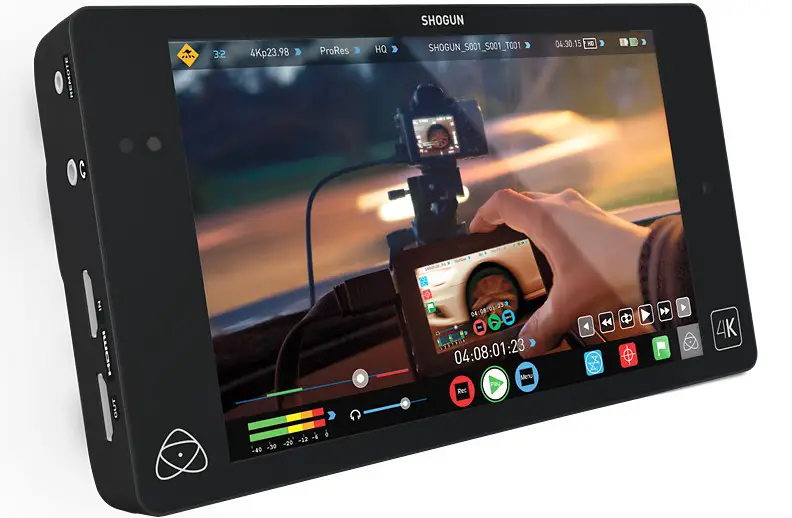
Press Release
Canon has entered the 4K arena with a clever 4K UHD compact video camera. The Atomos Shogun is fully approved for recording from the XC-10.
Melbourne, Australia – 8th April 2015: Canon’s latest announcement sees the Japanese giant launch a compact 4K video camera, the XC-10. Inheriting many features from the Cinema EOS range but in an incredibly small form factor it delivers 4K on the run and most importantly has the essential feature of clean HDMI, start/stop trigger and timecode over HDMI for perfect integration with the Shogun and other Atomos recorders.
“Atomos is proud to be playing a major part in the 4K revolution by enabling these amazing cameras to record to edit friendly formats.” said Jeromy Young CEO and co-founder of Atomos.
“Canon today has changed the playing field again with this pocket rocket that is only unleashed by the addition of a Shogun recorder or an Atomos CFast card, we are confident Shogun will be the first accessory purchased for the XC10.”
With the Atomos Shogun, XC-10 users will gain:
- Direct to ProRes/DNxHR 4K recording (up to 2160p30) and ProRes/DNxHD recording (up to 1080p60). This means users do not have to transcode the XC-10’s internal recordings ready for editing in Apple FCPX, Adobe Premiere or Avid Media Composer.
- The 4K recording, apart from being the native codec for NLEs, is also 4:2:2 color accuracy and 10-bit color depth that enables the freedom in post production to integrate 10-bit effects and overlays.
- A 7″ monitor almost six times the area of the XC-10’s 3″ display, is the best and only way to truly set up Pro shots with professional features not available on the XC-10 like 3D LUTs, 2:1 & 1:1 zoom for critical focus, vectorscope, false colour and the ability to have ongoing colour calibration using an optional Spyder unit.
- Ability to tag footage on the fly as Favourite/Reject ready for immediate integration into Final Cut Pro, Adobe or other NLE’s
- Long record times onto affordable and reliable SSD media as opposed to the more expensive $/GB media option on the XC-10
- With built in HDMI to SDI signal conversion the Shogun/XC-10 combination can perfectly integrate into an existing SDI workflow
- The breakout XLR connection gives the Shogun/XC-10 combination both balanced analog XLR audio and 48V phantom power options for condenser microphone solutions.
For all of this added functionality, users do not sacrifice usability since the Atomos Shogun and the Canon XC-10 have synchronized start/stop trigger and timecode over HDMI meaning 1 touch recording from the Canon will trigger the record and timecode to start on the Shogun.
The Canon XC-10 also supports the Atomos CFast cards. Small and reliable Atomos CFast cards are available in both 64GB and 128GB options and perfect for affordable filmmaking on the go. The blend of advanced functions with industry leading usability makes the XC-10 / Shogun a perfect 4K combination and the biggest 4K news to come from NAB 2015, which still hasn’t started yet.
About Atomos
Atomos exist to help creative professionals cut through technology barriers by creating easy to use, cutting edge products including 4K & HD Monitor-recorders, a pocket size ProRes recorder, signal converters & power management solutions. Each product serves a different need but all share the common benefit of enabling a faster, higher quality and more affordable production schedule for video professionals.
Atomos is based in Australia with offices in the USA, Japan, China and Germany and has a worldwide distribution partner network. Further product information can be found at www.atomos.com with the Atomos community active on Facebook (/atomosglobal), Twitter (@Atomos_News), Vimeo (/atomosvideo), YouTube (/AtomosVideo) and Videogram (atomos.videogram.com)
Disclaimer: As an Amazon Associate partner and participant in B&H and Adorama Affiliate programmes, we earn a small comission from each purchase made through the affiliate links listed above at no additional cost to you.



